11 Rites of Passage for Every DIY Mechanic
Read all the books you want. Watch all the TV shows and YouTube mechanic videos that have ever been filmed. Sit and have a conversation with everyone who has turned a wrench. You still won’t be a mechanic, because practice and experience cannot be taught.
When younger enthusiasts recount certain adventures (or misadventures) to those with a few more years in the hobby, the seasoned folks will nod along. A mechanic’s rites of passage often need no explaining; by definition, these experiences have become universally accepted as ones that you must encounter and conquer to become proficient.
Which of these 11 rites of passage have you experienced, and which do you think changed you the most?
Rite of Passage #1: Roadside repair with makeshift parts
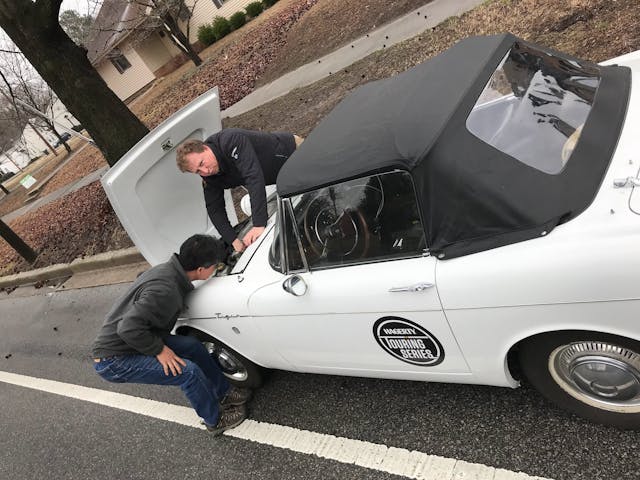
Whether on the road or in the shop, there comes a time when what you have is all you’ve got, and what you have just needs to work. Gaskets cut out of beer packaging, throttle cables made of shoestrings, or bailing wire on a part or piece that should be properly connected, but isn’t … If you understand a system well enough to engineer a functional fix on the fly, you truly understand how that system works.
Rite of Passage #2: Busted knuckles
You know the bolt is about to break free, so you give it a little extra oomph—and slam your hand into something. Usually, that something is heavy, rusty, or sharp … possibly, all three. Keep a record of your last tetanus shot handy, and know that we’ve all been there. Pulling towards yourself is often safer, except when it comes to cutting tools or other sharp implements.
Rite of Passage #3: Trapped tools
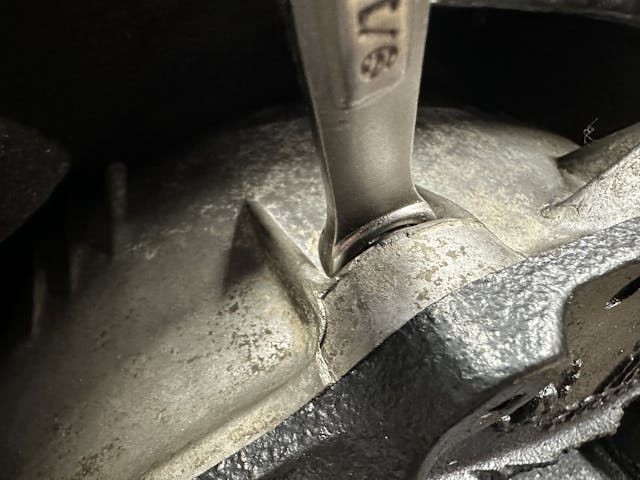
The order of operations during disassembly and assembly is important—but you’ve got to pay attention to your tools, too. We’ve all been in situations when the excitement of a bolt coming loose makes us forget the limited space we’re working with, and suddenly our wrench is trapped between a bolt and a hard place.
Rite of Passage #4: Broken hardware
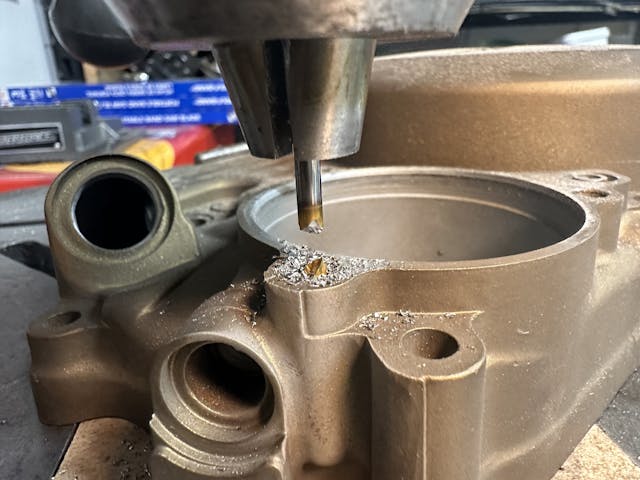
When a bolt chooses to Marie Antoinette itself, or threads stretch past the plasticity point and become unusable, progress can get tough. The fact of the matter is that rookies are more likely to break hardware, but there is a bit of a bell curve: As you tackle more and more projects, the quality of your work often rises; and then, as you gain confidence to handle the problems you now expect to encounter, the quality of your work tends to dip. Learning new methods for dealing with broken and stuck hardware is a never-ending quest for any wrench, green or seasoned.
Rite of Passage #5: Buying the shop manual
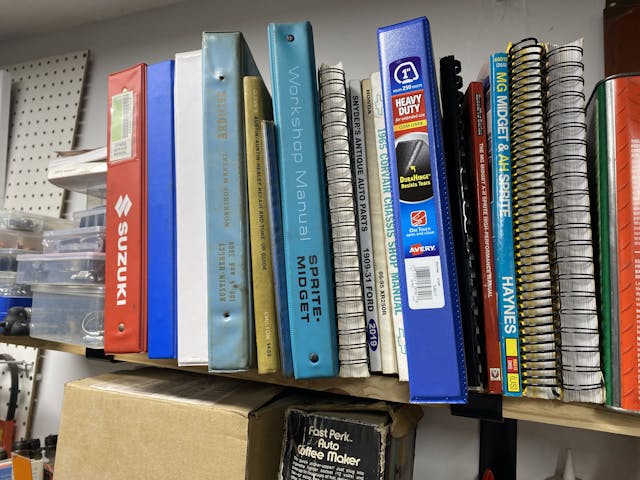
Just about everyone went through a phase when they felt as though they knew everything. Most advance out of such a state to understand that, even with everything they know, the shop manual knows more. Learning just how important and helpful a shop manual can be is often a freeing experience: Buying one is the first step to being self-sufficient because it allows you to solve problems without calling in experts or endlessly searching the web.
Rite of Passage #6: Disappearing parts

How else are you going to learn to organize your shop if you never experience the mildly panicked search for something you sat down right there? Everyone who ever gave you advice about doing DIY work probably told you to bag and tag parts and hardware, but most of us had to learn the benefits of organization the hard way to truly understand them.
Rite of Passage #7: Endless parts search
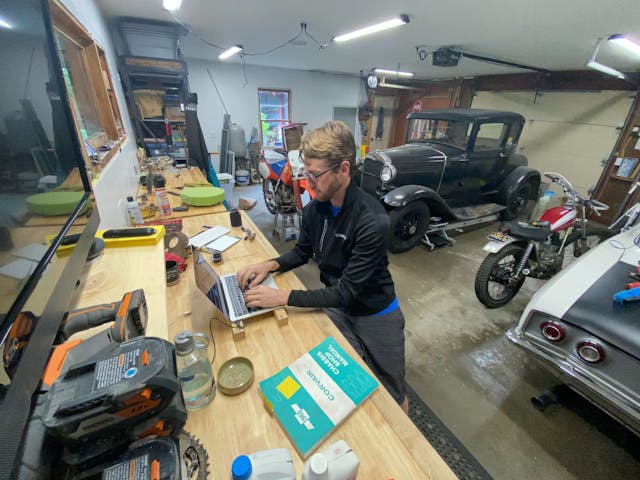
You saw that cool hunk of metal on the side of the road and just had to have it. Now you got it home and are excited to get to work and … Wait, there are no parts available for this? Sometimes the coolest models are the ones with the most problems and buying one that needs everything without realizing none of the parts exists is the gearhead’s version of falling in love with a crazy person: You often can’t give them what they need, and if you try, you’re going to be doing a lot of work (and probably spending a lot of money).
Rite of Passage #8: First rebuilt engine start-up
The thrum of a well-tuned engine is magnificent, but the stutter and cough of one chugging to life for the first time is even more enthralling. Was everything assembled correctly? Was anything forgotten? How is the combination of parts you chose going to work together? It all becomes clear with the first touch of the key. Weathering that storm of nerves is an experience unlike any other.
Rite of Passage #9: Ruined clothes
It was supposed to be a quick, clean job. Now that pair of jeans that used to be nice is stained with oil. (The situation is even worse if you’ve just ruined a pair of pants that your significant other specifically told you not to wear in the garage.) Typically when doing DIY work you dress to protect, not to impress. Hubris may protest, calling that an obvious truth, but the drawer of “work clothes” indicates we occasionally need a reminder.
Rite of Passage #10: Inclement weather moving in

Having a garage is a luxury that some of us take for granted. Most of us started by working on whatever we had wherever we could: Laying on our backs in gravel driveways, sitting cross-legged on the dirt of the back yard, or even leaning over core supports on the side of the street. If the sun was shining when you started work, your lack of protection from the elements becomes obvious as the clouds gather and the wind picks up. Being soaking wet, cold, and/or dirty while trying to assemble or diagnose your car is not fun, but we all must experience this misery to truly appreciate mild weather and good shelter.
Rite of Passage #11: Fixing what is not broken

The excitement to work on a project is sometimes so great that it must be satiated—even when there is work that needs to be done. I personally recall my father giving me the “if it ain’t broke, don’t fix it” speech while in my early teens; I had just made a mess of the garage floor taking apart something that had worked when I started and, more than likely, would never work correctly again. Poor thing.
Do you have to go through all of these to be a decent mechanic? Of course not, but many of us have experienced most, if not all, of these and more. Think we missed a rite of passage that changed you? Let us know about it in the comments below.
***
Check out the Hagerty Media homepage so you don’t miss a single story, or better yet, bookmark it. To get our best stories delivered right to your inbox, subscribe to our newsletters.
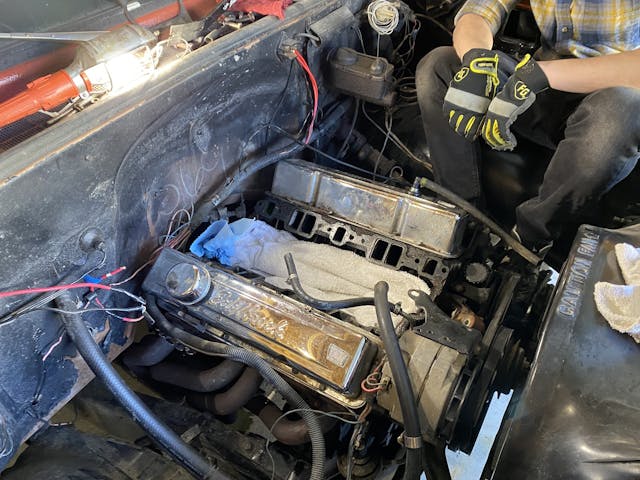


9/22 I finally acquired a 97 Ranger XLT extended cab; 4.0 5 speed which was sitting for 7 years at a friends garage: sitting another 3 years prior to coming there: under carriage was total rust, but frame was good and body, surprisingly, excellent: thought was to totally rebuild underneath and make it safe and do a 302 swap: I started the rebuild in September 02; finished in January 03: thru a very cold MD winter, working TOTALLY OUTSIDE-no garage: AT 82 YEARS OLD!!! Definitely not for the faint of heart: but perhaps for the totally insane!! Ended up having to 4.0 actually be in very excellent shape; runs like a sewing machine, so took the $ for the swap and painted it in 2022 Toyota Lunar Rock!!
Another rite of passage is that things may not be as easy as you think. It had only need a week since I brought home a 1970 ‘Cuda 440-6 (No I don’t still have it but I know who does). The starter needed replacing – I was 19 and had plenty of enthusiasm but not much experience.
The first thing I realized was that the starters were wrapped so closely around the starter that they had to come off (which was actually the reason the starter failed), Taking the headers off was excruciating – they were bolted to the block with bolts with a 7/16 head that, because of the bend in the header pipes, you could only remove with an open end wrench quarter turn at a time. Once the bolts came out, anti freeze started pouring out of the bolt holes – should have drained the engine block first!! And that wasn’t the end of it. The headers still couldn’t come off without dropping the suspension – I thank my Uncle for supplying the proper tool and showing me how to do that. Finally, I scoured the local junkyard for a heatshield from a Dodge truck that I could put on the new starter so it would not meet the same fate as the old one. Start to finish it took me a week to do something that I thought would take half an hour!
Another rite of passage is that things may not be as easy as you think. It had only been a week since I brought home a 1970 ‘Cuda 440-6 (No I don’t still have it but I know who does). The starter needed replacing – I was 19 and had plenty of enthusiasm but not much experience. The first thing I realized was that the headers were wrapped so closely around the starter that they had to come off (which was actually the reason the starter failed), Taking the headers off was excruciating – they were bolted to the block with bolts with a 7/16 head that, because of the bend in the header pipes, you could only remove with an open end wrench a quarter turn at a time. Once the bolts came out, antifreeze started pouring out of the bolt holes – should have drained the engine block first!! And that wasn’t the end of it. The headers still couldn’t come off without dropping the suspension – I thank my Uncle for supplying the proper tool and showing me how to do that. Finally, I scoured the local junkyard for a heatshield from a Dodge truck that I could put on the new starter so it would not meet the same fate as the old one. Start to finish it took me a week to do something that I thought would take half an hour!
Damnit, all of these stories makes me want to go work on my Merkur today! Should I? NO! I have a thousand other things I should be tending to. Maybe that new A/C compressor, shorty radiator, and Cosworth intercoolor will FINALLY get installed today.
I started in the late 50s and early 60s. Mis-matched tools, still need that well lit garage with a lift, finding parts on the internet-how about finding parts in a junk yard. Buy that one odd ball little used tool, can’t find and buy another. Put it where it won’t get lost and just happens to be next to the 1st one. Your best friend was a junk yard that would check their Hollanders book for you or the parts store that let you have last years Weatherhead indexed catalogs.
I once bought a damaged Ferrari 308 GT4 which had been hit front and rear to the extent that the bodywork fouled all four wheels. I cut the panels off so that I only had basically the cockpit left and drove it with engine and suspension fully exposed from Stoke on Trent to Essex (about 180 miles) through daytime traffic. Attracted lots of stares but fortunately not from police. I was young and very foolish and I wouldn’t try it now.
#1 At 11:00 pm, the gas pedal bar snapped on my 2 year old 70 GTO. Drove home by using the throttle cable through the firewall. Street raced a Mustang on the way home. Trashed him. All I needed was 2nd gear. #2 Have those missing tools drop out of the engine bay while you are driving down the Jersey Turnpike,
I grew up on a farm helping work on equipment from an early age. “Climb up into the guts of the combine and hold this wrench on that bolt so I can get it off” says dad, when I was maybe 10. Took a bit to get in there, find it, and then be able to hold it while a grown man was trying to get the seized bastard off!
But my “rite of passage” story is with the first car I bought and “fixed up” — 1 1961 Rambler American wagon with a flat-head six. Changed the spark plugs, and when started it sounded like someone was inside beating the block with a hammer! You know there are little cones that the plugs go into on an in-line flat-head, right? Had to take the head off (that was an ordeal itself!) and found a small piece of lock washer embedded in the top of a piston. Luckily it didn’t do nay damage other than put a few marks in the top of the piston and chamber. It had bounced over to the low part of the chamber near the edge of the piston closest to the valves and stuck in the piston. I made sure I cleaned those cones out after that! Many newer cars have deeply recessed plugs, but most have a cover on the boot to keep at least bigger things out!
Baptism by oil
Hearing hoof eats and thinking zebras. I cut my mechanic’s teeth on a 1962 Ford Falcon. As I learned a little more I quickly began to think I knew a lot. Driving home on day it sputtered and stopped. It turned over but wouldn’t fire. I jumped out and checked for spark, air and fuel, to discover it wasn’t getting fuel. I grabbed a wrench from the trunk and removed the fuel line from the carb. Yup, that was it, no fuel getting to it. What could that be? Well the fuel pump had gone bad of course!
So I walked home, got my Dad to drive me to the auto parts store where I bought a shiny new fuel pump. We drove back, it took me just minutes to remove and replace the pump and I tried to start it again. It took a lot of cranking but I figured it needed to prime the pump and fill the fuel bowl. Still wouldn’t start.
My Dad, not a mechanic but a medical man, asked, “Are you sure you have gas?” “Of course,” I said as I turned the key and checked the gauge. It didn’t move.
We got a can of gas and poured it in. It then started right up. Yup, I had simply run out of gas.
He said I made an age old mistake in my diagnosis, I looked at the symptoms and then jumped to a complex, although less obvious or probable cause.
When I heard hoofbeats, I thought zebras, not horses.
That was my scene too. I had just bought a 55 Chevy back in 1979 and got it road worthy. Died on me with a gas gauge reading about one third full. I believed it so I didn’t check for fuel flow. Ran to the parts store for the fuel pump. Installed it and got the same results. Someone said maybe you’re out of gas. Put in a couple of gallons and started right up. It was an inaccurate gauge/float? I had konked out about 20 yards from a gas station. It’s always fun to waste your time, energy, and money when you don’t need to.
You had a plausible reason, an inaccurate gauge, I didn’t even check mine.
BTW I worked at a gas station at that time and often rescued people that ran out of gas.
To my credit though, I learned, and haven’t run out of gas in like 55 years.
My “Aha Moment” came when, following a tune-up in a local automotive repair shop, my car ran no better. I got out a simple-off-the-shelf repair manual, began reading, went to my car with some rudimentary tools given to me by my father–and I fixed the problem. When next I saw the mechanic at that repair shop, I told him what had happened. He shrugged his shoulders and I knew that I was going to do my repairs from then on. I was not going to be fooled again! It was a difficult road–since I was raised “without tools”. But decades later–and many car repairs under my belt–I feel vindicated! That’s my Number 12, Kyle! Good article!
Lost fasteners dropped while working on the top side of the vehicle, where did it go ??? Find the fastener weeks later under tiller stored in the back of the garage. I’m 72 now but in recent years I have learned to lay old sections of carpet under the vehicle to prevent the dropped fastener from reaching wrap 9 (StarTrek ) and disappearing when it hits the concrete floor. The carpet does not prevent bruising body parts, but that is part of the repair.
I like watching Hagerty videos on barn finds. They’re excellent.
I’ve been meaning to write these words to you for a while now.
What I don’t like is reading is about your possible rights of passage in becoming a journeyman auto mechanic. You’re a wannabe mechanic who has settled on working at a different career that you hate just to pay bills. So, you write articles imagining what it’s like turning wrenches for a living. Believe me, you’re not even close to the truth.
If you had a deep down desire about being a mechanic, you should have attended a tech school. I’m not just talking about your High School auto shop class either. I’m referring to 1 or 2 years of (aviation, diesel, auto, motorcycle, welding) schooling. Then you’d be ready to start your mechanic apprenticeship. After about 10 to 30 years worth of 40 – 80 hours working a week, in all types of weather you might have something worthwhile to communicate to others who never turned wrenches for a living.
These articles you write are the main reason why I have unsubscribed to Hagerty’s emails.
I bid you peace ✌🏻and continued joy living in your dream world. Selah~
Thanks reading and providing feedback Selah. It’s always appreciated.
To be fair, I never said I was an expert, professional, or anything more than a guy tinkering with projects in his garage, though I do have a bachelors of science in automotive restoration from McPherson College, the only 4-year auto restoration degree in the country. I have great respect for the people who turn wrenches day in and day out and do not attempt to pass myself off as one of them. I am a writer who enjoys working on projects. If my content is not for you that is okay. Hopefully you continue to tune in for more of Tom Cotter’s finds and maybe there are other writers on the Hagerty team you enjoy. Keep driving and wrenching, Kyle.
Last, but most significant, creating your dream restomod and finding out the cost is way beyond what you told She Who Must Be Obeyed it would be. I explained to her that it could double as my custom casket when the time came. Seemed to appease her.
How about rag fires! One time I was doing the upper/lower control arms on my son’s PoS Hyundai Santa Fe and was forced to use my portable torch rig or get a lower frozen bolt off and since the CV boot was leaking the rubber started to burn!
Of course to make matters worse my wife decided to check up on me as it is burning….she just stood there in the doorway and didn’t say a word as I asked her to hand me the spray water bottle….